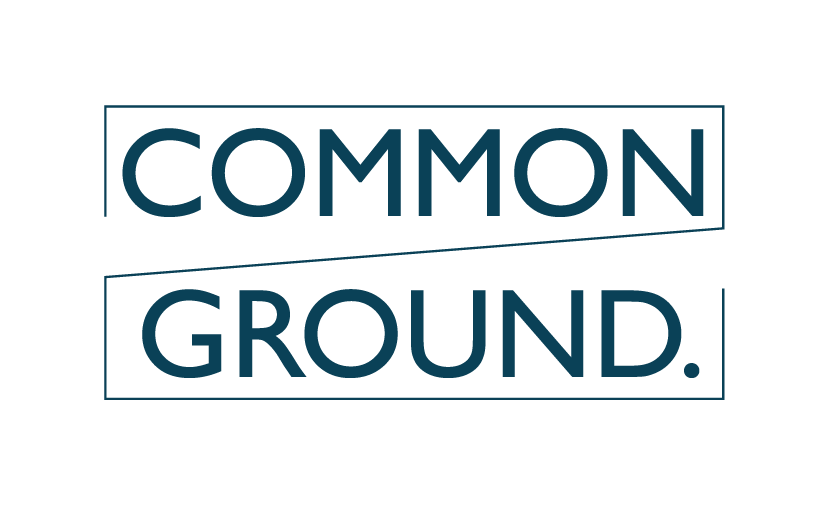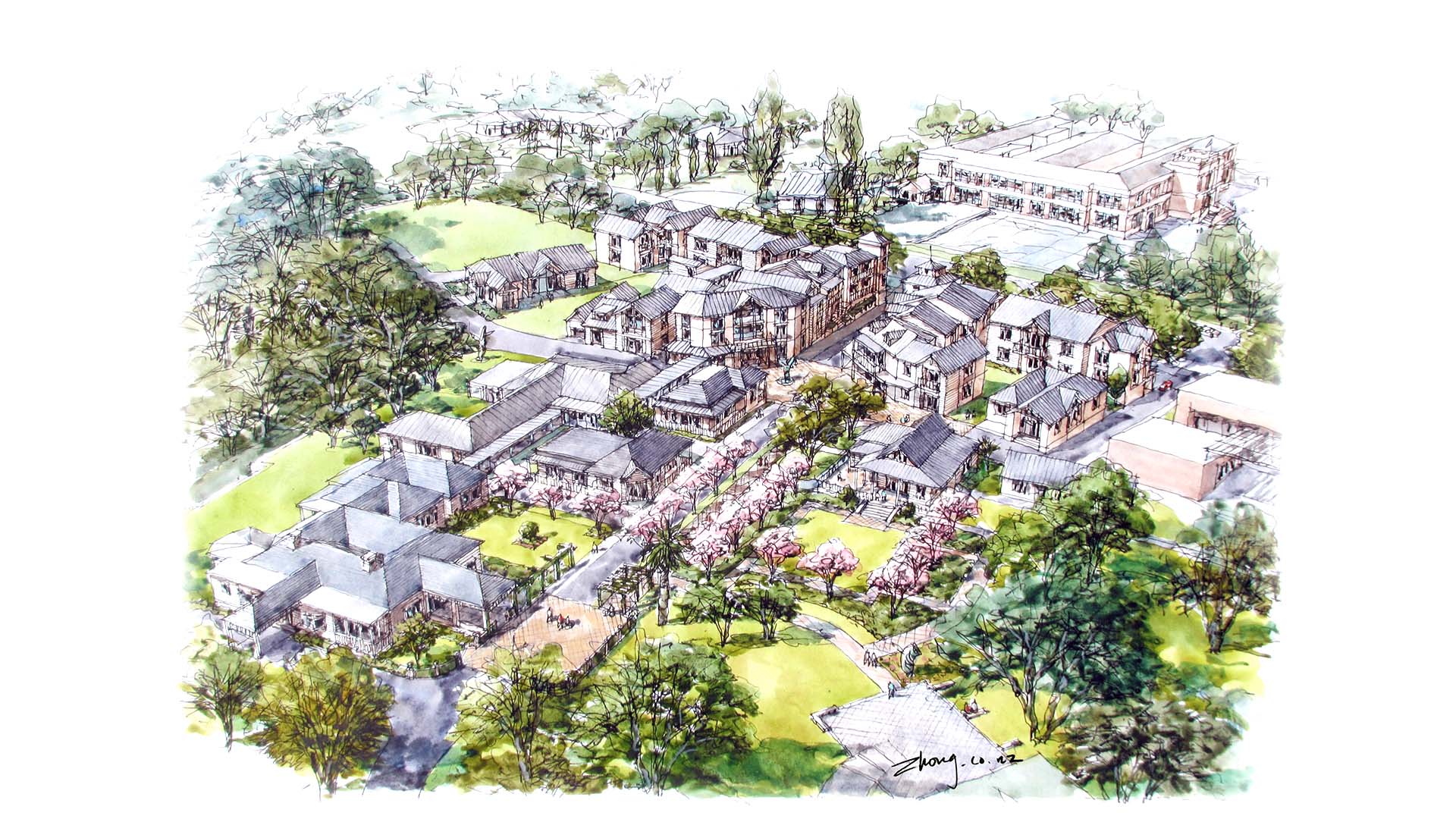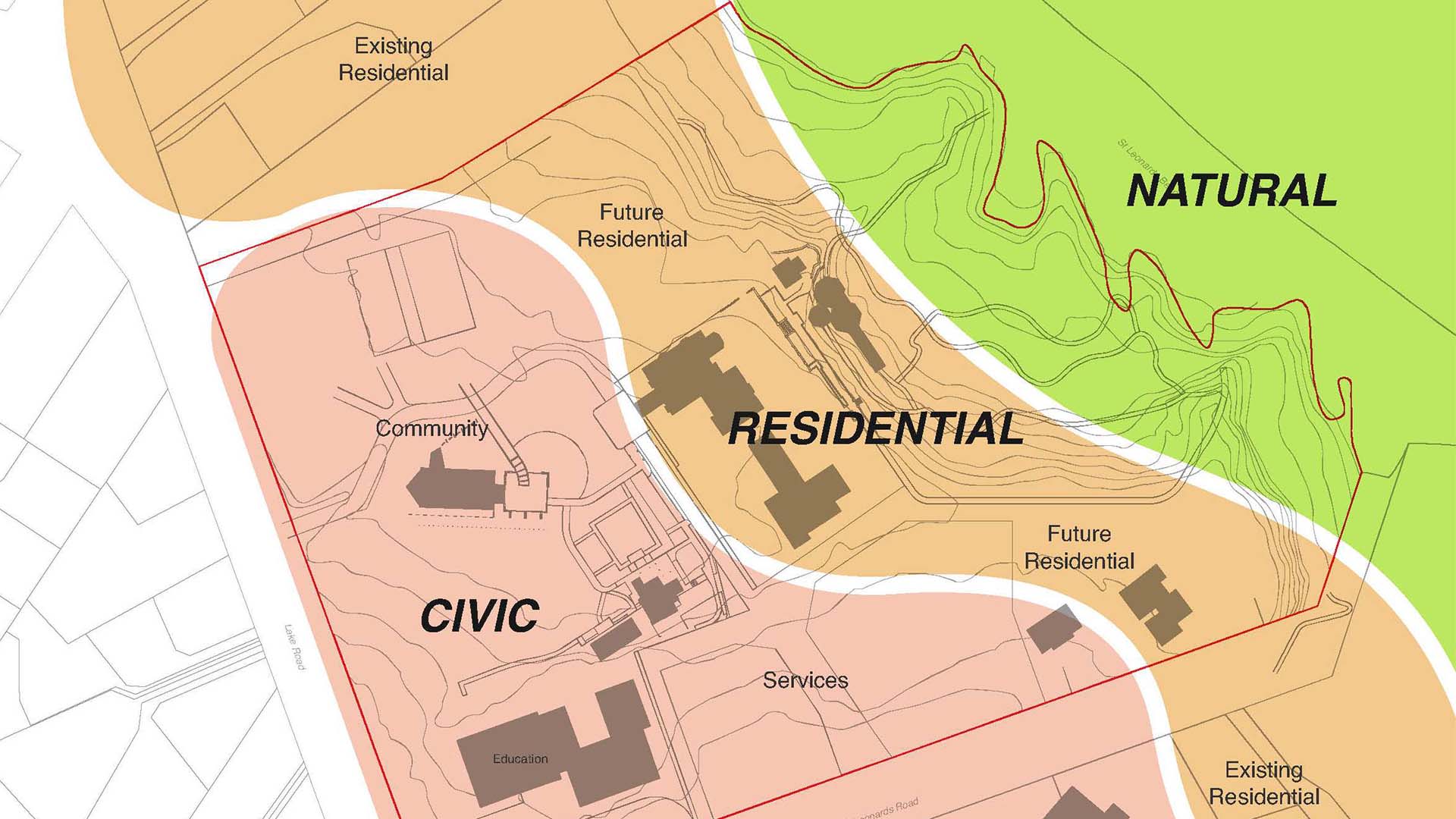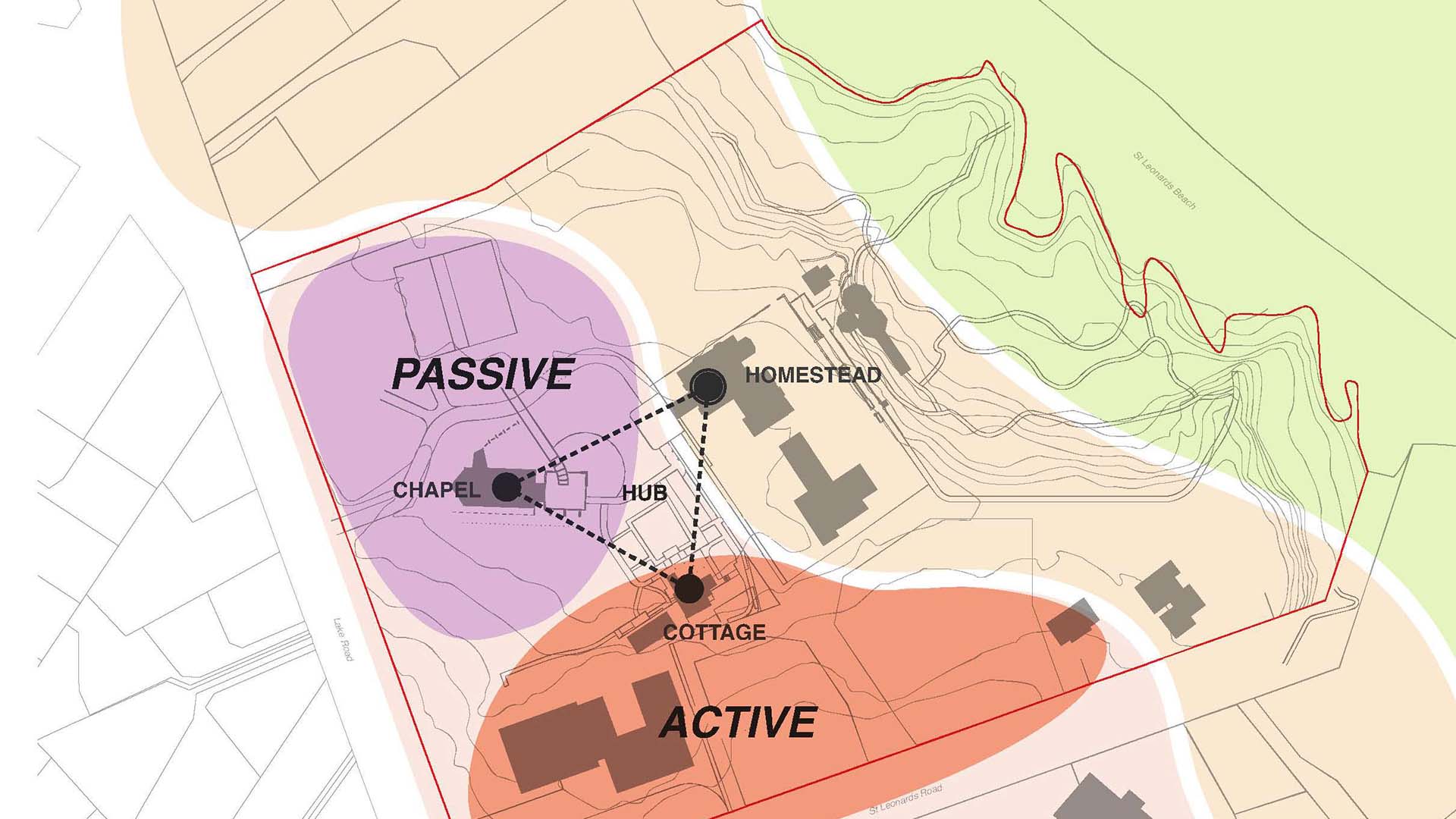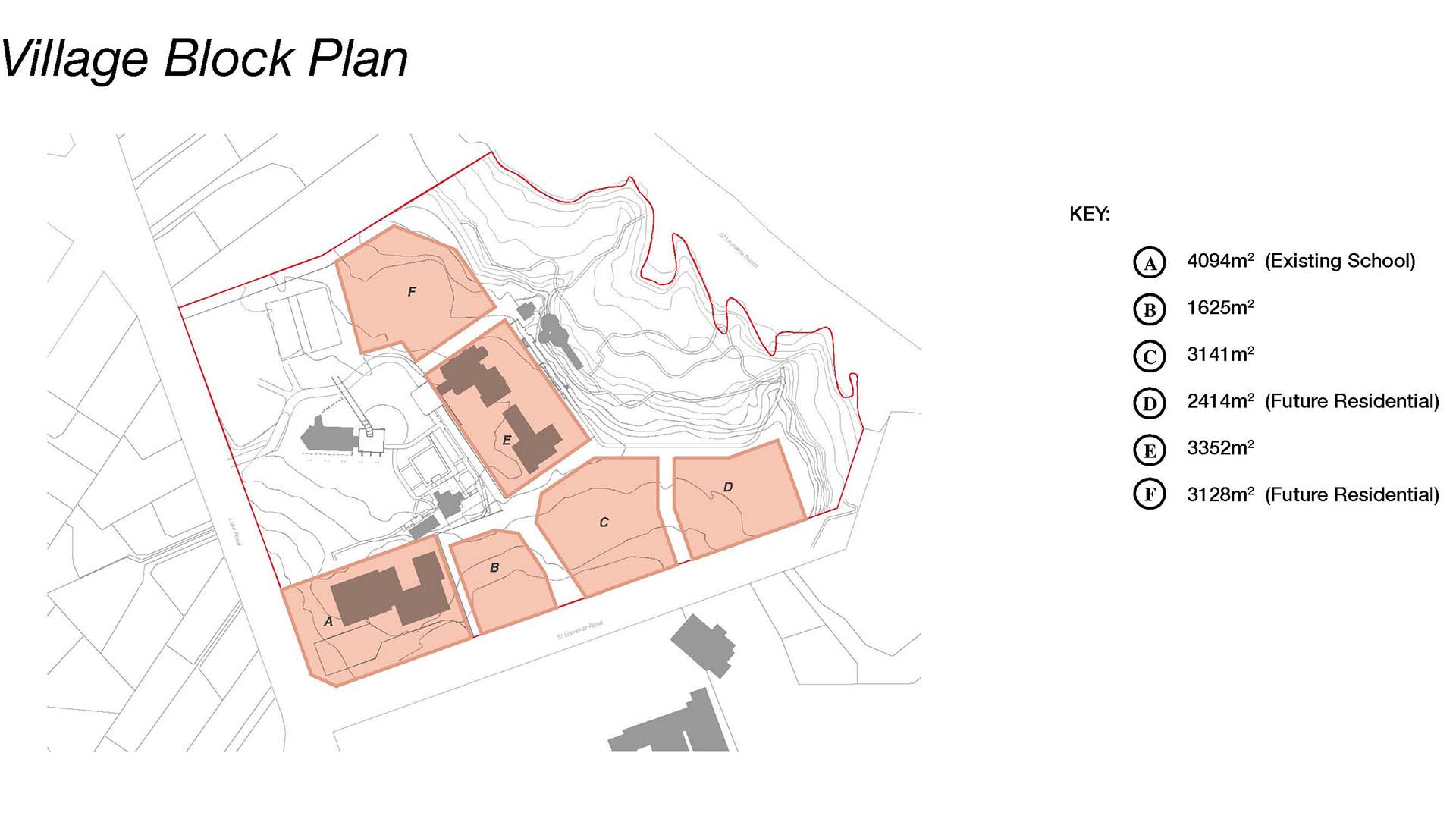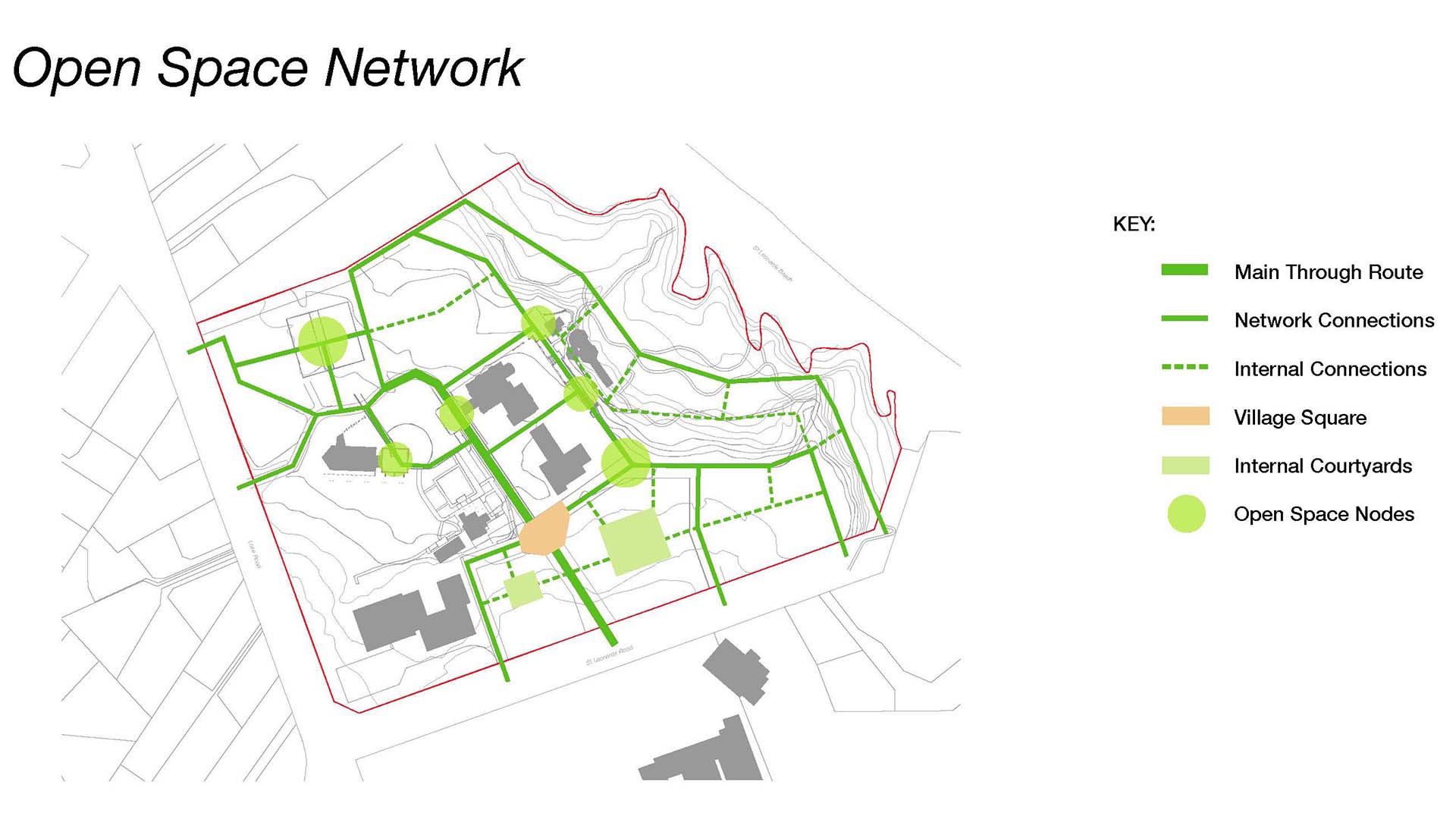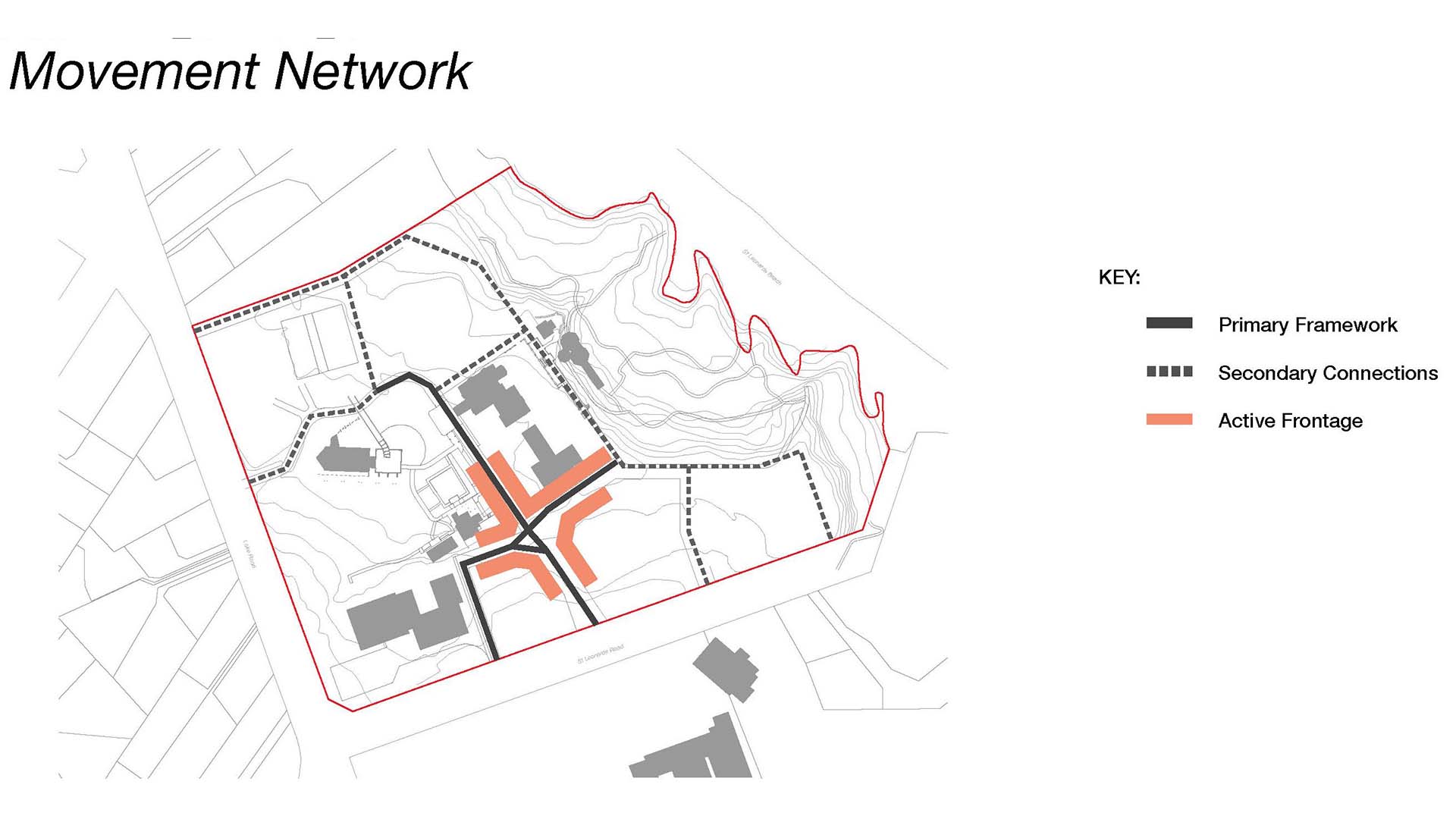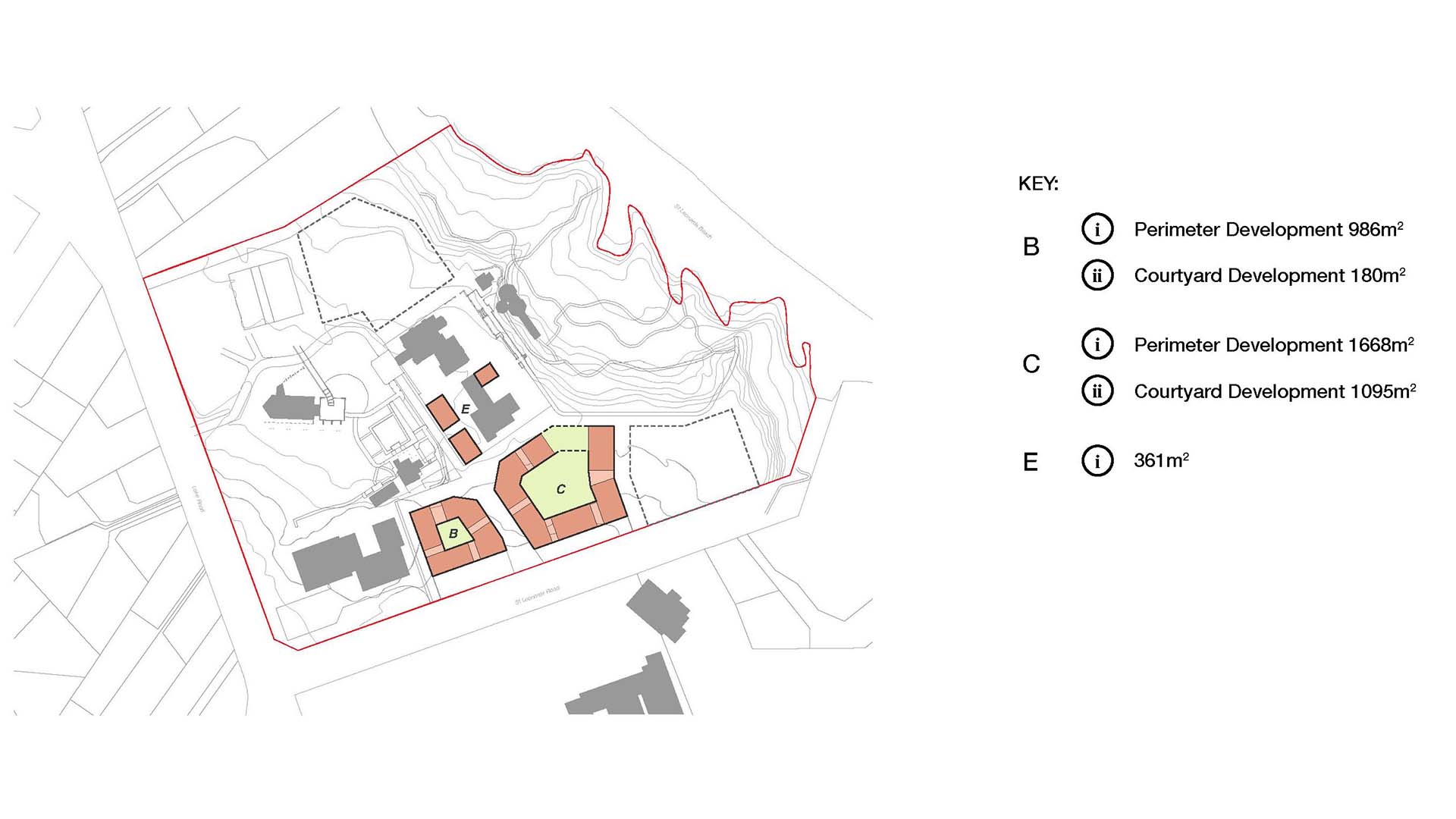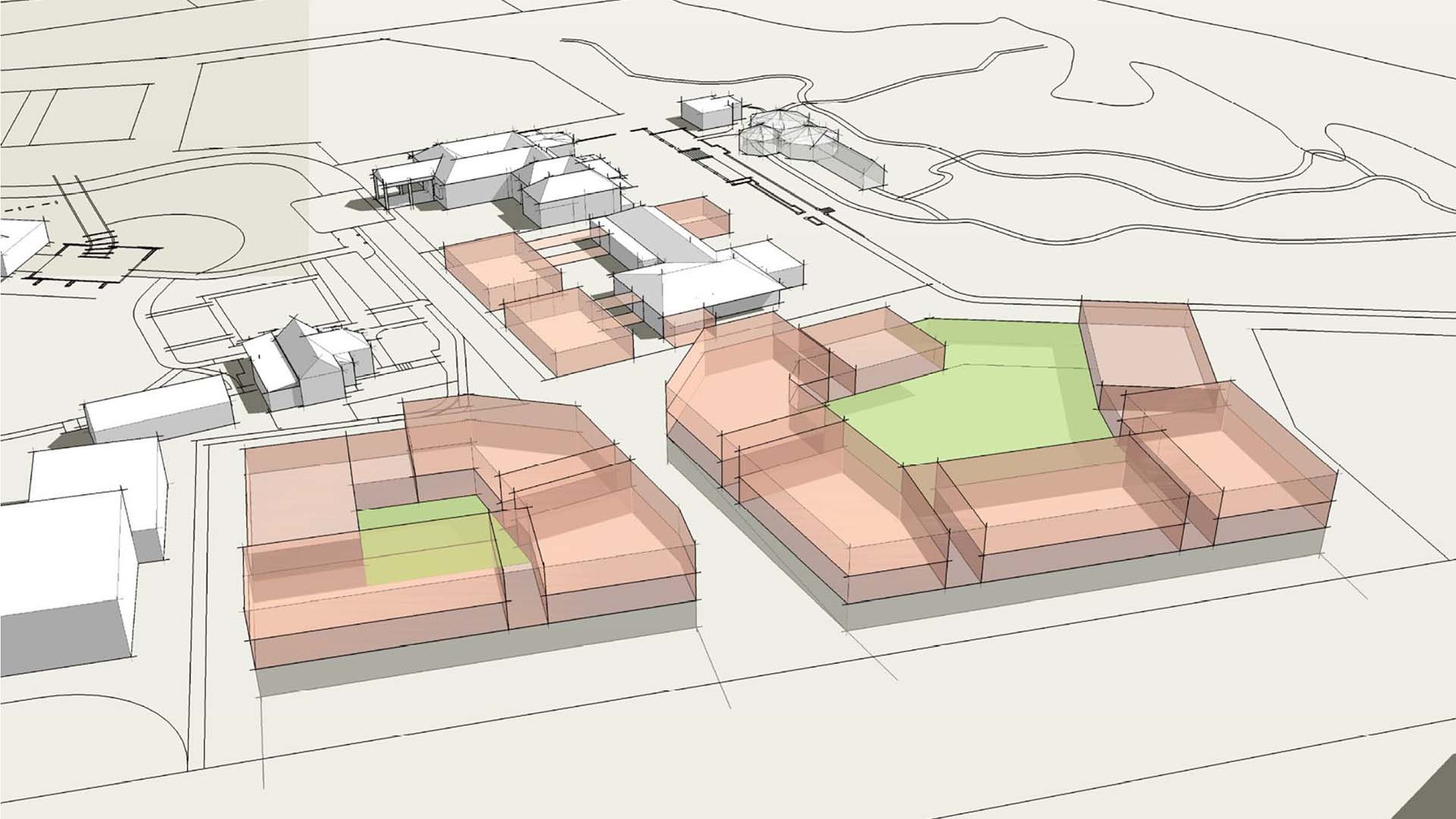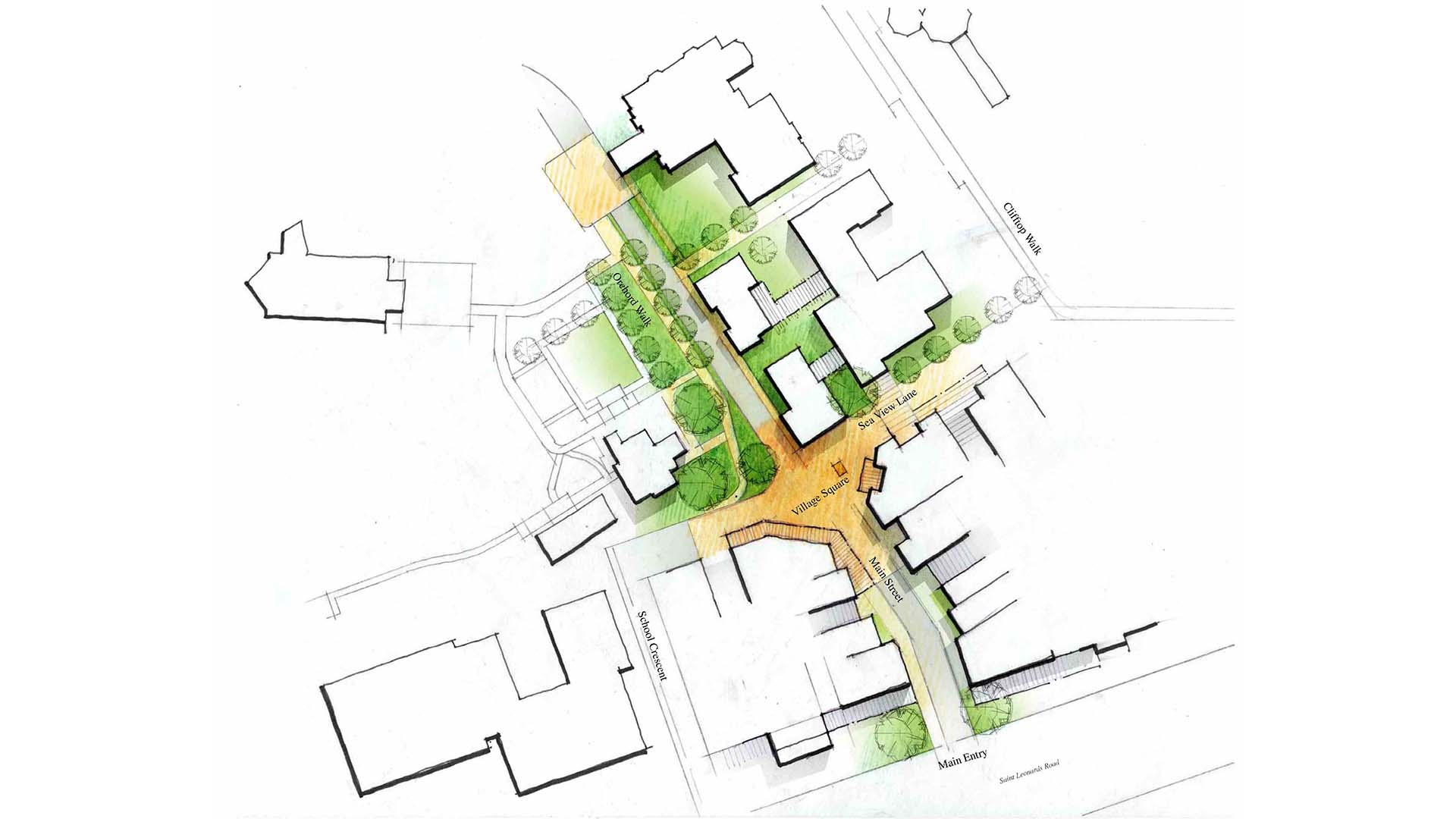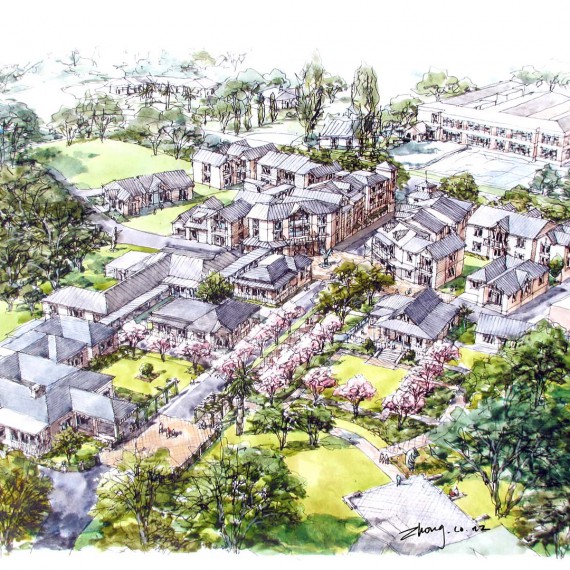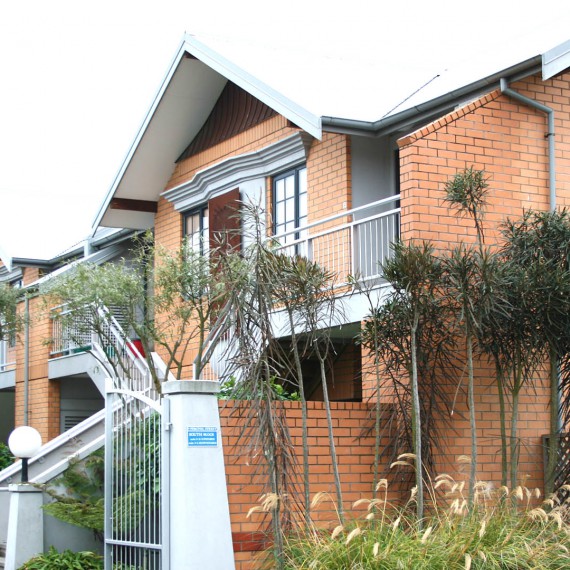Pressure from hugely increased property values, increase in the severity of disability and the sheer numbers of children requiring care put pressure on the Trust to explore how they might best expand and develop. Many options were considered, including asset divestment and a change of focus away from direct child and family support to a more abstract sector and advocacy involvement.
As part of this process, Common Ground was commissioned to design an alternative development concept for the site. We used the opportunity to refine the Trust’s own definition of itself and to give concrete expression to its values. If the ‘home’ was the ideal setting when the scale was small, it was obvious to us that the most appropriate development form if the scale increased was a collection of homes, or a village – small, intimate, pedestrian, having a heart and a focus.
The resulting plan became an empowering vision for the Wilson Home community. It met with widespread support from the community and from the sector. Above all, the design strengthened the identity of the Wilson Home as a community through an increased physical presence, championing and protecting existing heritage and environmental values and asserting even more strongly the value we place on these children.
From that strengthened position a clear strategic change is enabled to devolve the Wilson Home care model into other communities throughout the country. This would be a fundamental shift in the position of the Trust: to preserve the intent and value of the original Deed it is better to grow and develop – not by getting bigger and spreading resources wider – but by becoming stronger and supporting the community to reproduce and replicate the itself in other places.
First the family; then a community, a family of families; finally a family of communities.
